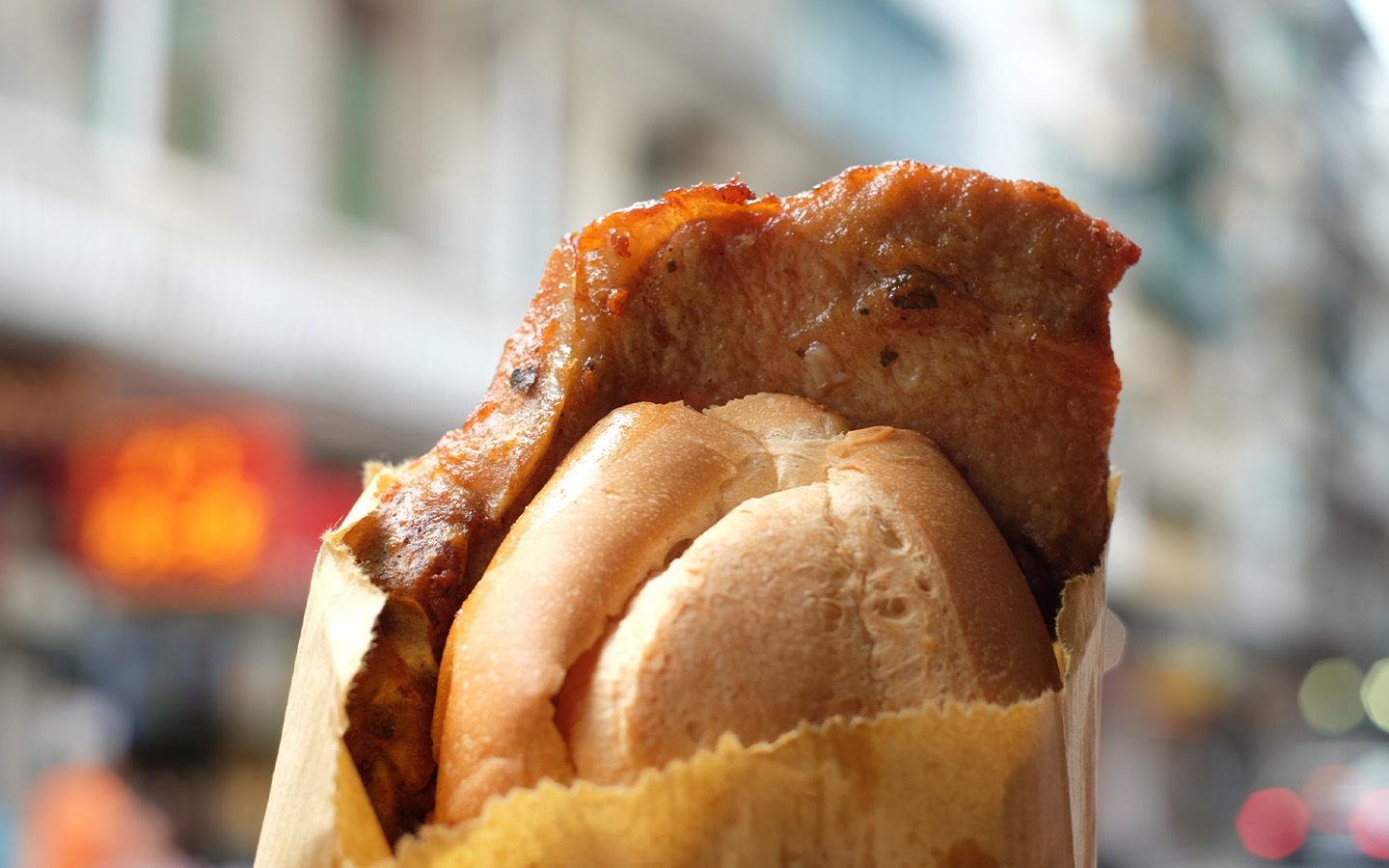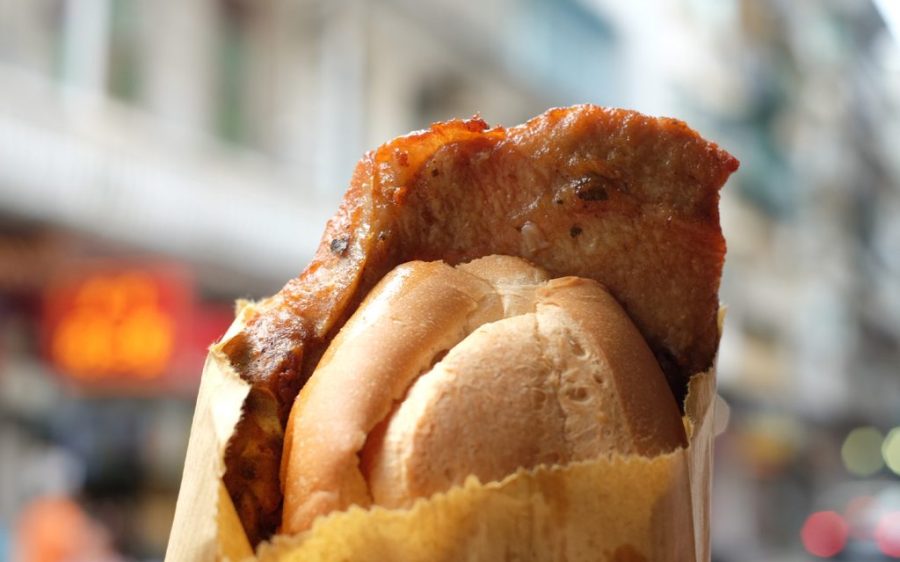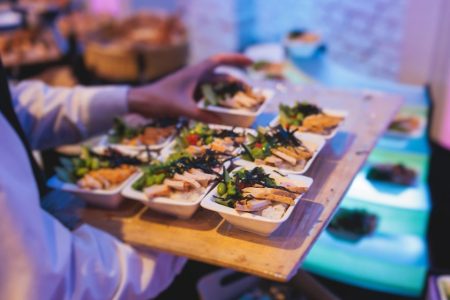Macao’s beloved pork chop bun has been deemed worthy of official recognition as Intangible Cultural Heritage, the Macau Post Daily reports. The making of this savoury street snack – along with Cantonese music and Patuá songs – will be included in the Cultural Affairs Bureau (known by its Portuguese initials IC)’s upcoming round of additions to the Inventory of Intangible Cultural Heritage.
IC President Leong Wai Man announced the decision on Wednesday, without specifying when the 20-in-total new items would be gazetted.
Tour guides frequently list pork chop buns among the city’s must-try foods, alongside egg tarts, almond biscuits and beef offal. For the uninitiated, the sandwich is a bone-in slice of pork marinated in soy sauce and Chinese five spice, served within a toasted white bun – similar to Portugal’s famed bifana.
[See more: Macao street food guide: Outcasts 853’s Paji shares her top picks]
It is considered a quintessential fusion of Chinese and Portuguese culinary influences, reflective of Macao’s unique East-meets-West history.
Patuá songs, performed in Macao’s endangered creole (a blend of Portuguese, Chinese, Malay and Sinhala), are another expression of this heritage, while Cantonese music’s inclusion underscores Macao’s close cultural ties with southern China.
The 20 entrants will bring the SAR’s Inventory of Intangible Cultural Heritage up to 90 items. They will join the likes of herbal tea brewing, Macanese gastronomy, the Festival of the Drunken Dragon, bamboo scaffolding and tai chi martial arts.
IC first established the inventory with 15 items in 2017 and last updated it in 2020. The list, safeguarded under the Cultural Heritage Protection Law, recognises traditions and practices that form the backbone of Macao’s cultural identity.






